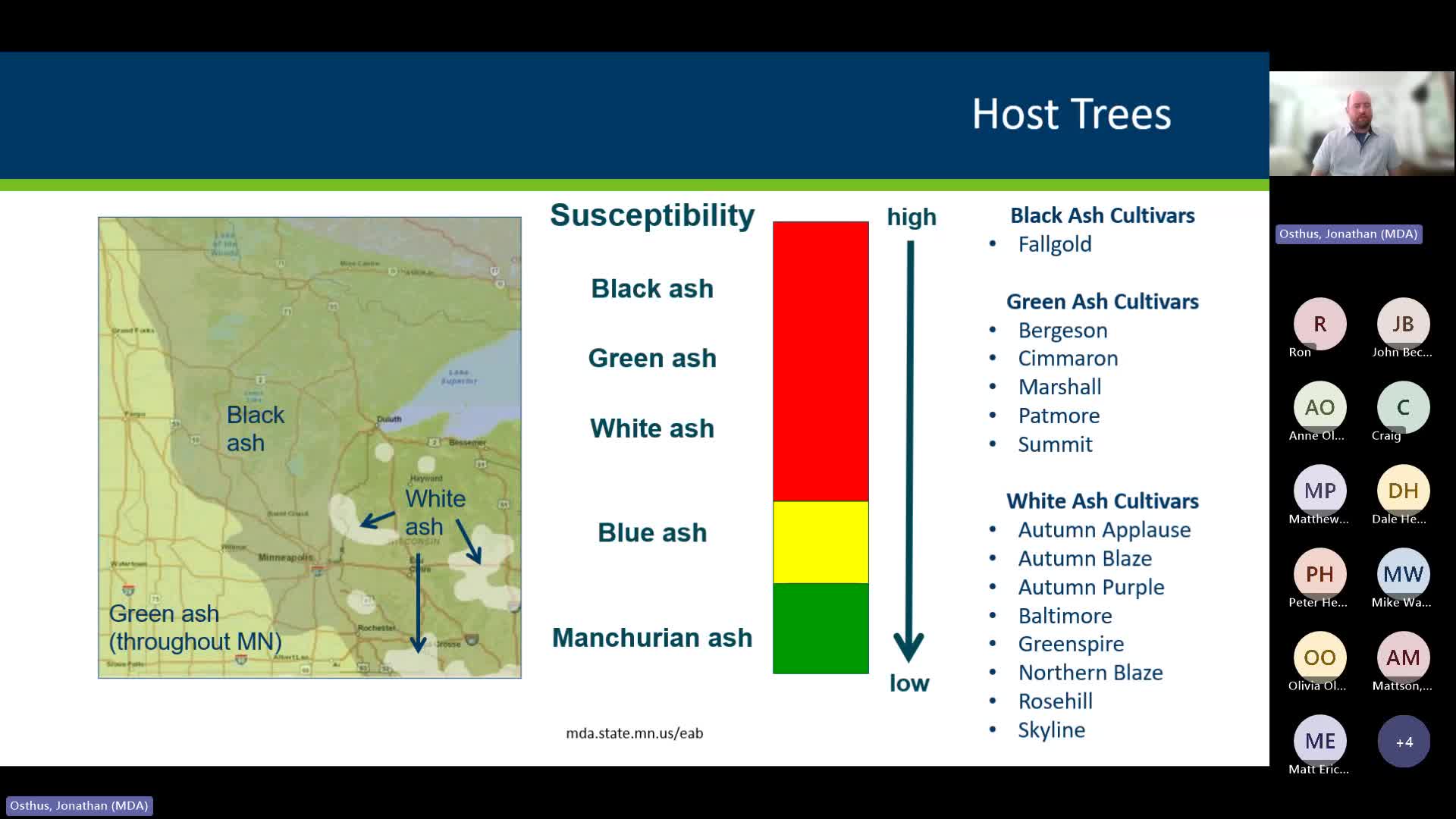Expert Discusses Emerald Ash Borer Identification Techniques for Minnesota Residents
July 11, 2025 | Agriculture, Department of , Agencies, Boards, & Commissions, Executive, Minnesota
This article was created by AI summarizing key points discussed. AI makes mistakes, so for full details and context, please refer to the video of the full meeting. Please report any errors so we can fix them. Report an error »

Emerald Ash Borer (EAB) identification took center stage at the recent informational meeting hosted by Minnesota Agriculture, focusing on Carlton, Meeker, Murray, Otter Tail, and Wadena Counties. Experts provided crucial insights into recognizing this invasive pest, which poses a significant threat to ash trees across the state.
The meeting highlighted four primary methods for identifying EAB infestations. The most distinctive sign is the S-shaped feeding gallery created by the larvae beneath the bark of ash trees. This unique tunneling pattern is a clear indicator of EAB presence, as no other insect in ash trees produces such a pattern. Attendees were encouraged to look for these galleries, especially in areas where the bark has been stripped away.
Another key identification method involves examining the larvae themselves. EAB larvae can be recognized by two spine-like projections at their tail end, known as yeragafi. If these are present, and the larvae were found in an ash tree, it confirms the presence of EAB.
The adult beetle, which is about half an inch long and features a striking dark magenta abdomen with iridescent green wings, can also be spotted in heavily infested areas. However, experts noted that these beetles are often hidden in the tree canopy during early infestations, making them less visible.
Additionally, the meeting discussed the importance of woodpecker feeding damage as an early sign of EAB. Woodpeckers often target infested trees, leaving dime-sized holes in the bark as they search for larvae. Observing these signs, particularly in the mid to upper canopy of ash trees, can help in early detection.
The session concluded with a reminder of the urgency in monitoring ash trees for these signs, as EAB can remain undetected for years before symptoms become apparent. With the threat of EAB looming, residents are urged to stay vigilant and report any signs of infestation to local authorities.
The meeting highlighted four primary methods for identifying EAB infestations. The most distinctive sign is the S-shaped feeding gallery created by the larvae beneath the bark of ash trees. This unique tunneling pattern is a clear indicator of EAB presence, as no other insect in ash trees produces such a pattern. Attendees were encouraged to look for these galleries, especially in areas where the bark has been stripped away.
Another key identification method involves examining the larvae themselves. EAB larvae can be recognized by two spine-like projections at their tail end, known as yeragafi. If these are present, and the larvae were found in an ash tree, it confirms the presence of EAB.
The adult beetle, which is about half an inch long and features a striking dark magenta abdomen with iridescent green wings, can also be spotted in heavily infested areas. However, experts noted that these beetles are often hidden in the tree canopy during early infestations, making them less visible.
Additionally, the meeting discussed the importance of woodpecker feeding damage as an early sign of EAB. Woodpeckers often target infested trees, leaving dime-sized holes in the bark as they search for larvae. Observing these signs, particularly in the mid to upper canopy of ash trees, can help in early detection.
The session concluded with a reminder of the urgency in monitoring ash trees for these signs, as EAB can remain undetected for years before symptoms become apparent. With the threat of EAB looming, residents are urged to stay vigilant and report any signs of infestation to local authorities.
View full meeting
This article is based on a recent meeting—watch the full video and explore the complete transcript for deeper insights into the discussion.
View full meeting
